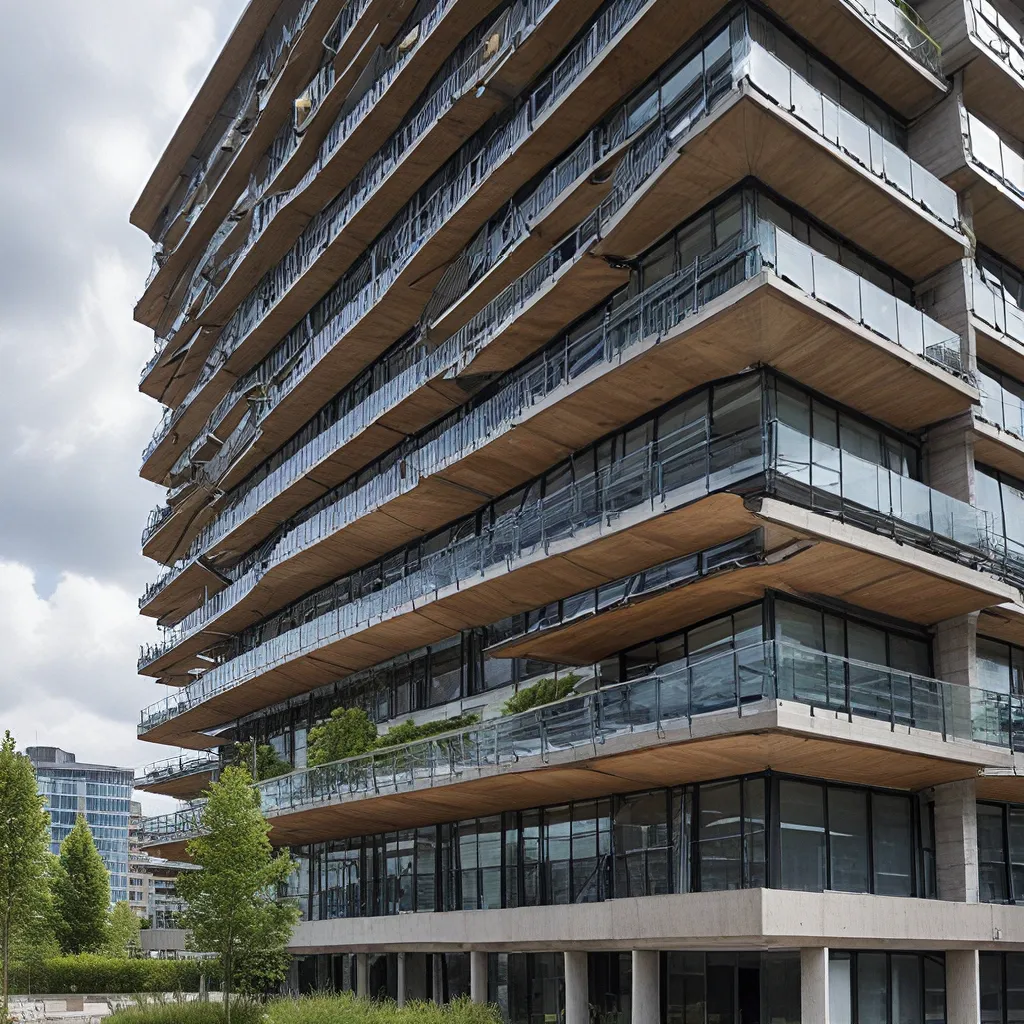
Designing for a Greener Tomorrow
As I stroll through the bustling city streets, the towering structures that pierce the skyline never cease to amaze me. These architectural marvels, once symbols of our ingenuity, are now at the forefront of a revolution – a revolution that aims to redefine the relationship between buildings and the environment.
Sustainable Architecture: The Future is Now
Gone are the days when energy-guzzling structures were the norm. Today, the concept of sustainable architecture has evolved from a mere trend to a pressing necessity. The convergence of engineering and architecture has paved the way for a greener, more eco-conscious future. Sustainable architecture goes beyond aesthetics; it’s a holistic approach that prioritizes environmental responsibility, energy efficiency, and the well-being of inhabitants.
Harnessing the Power of Renewable Energy
At the heart of this sustainable revolution lies the integration of renewable energy sources into building design. Engineers have stepped up to the challenge, devising innovative systems that effectively harness the power of the sun, wind, and even the earth’s geothermal energy. By seamlessly incorporating these renewable energy sources, architects and engineers are transforming the way we power our buildings, reducing our reliance on traditional, environmentally-taxing energy sources.
Collaborative Approach: Where Engineering Meets Architecture
The future of sustainable architecture hinges on a collaborative approach, where engineers work hand-in-hand with architects from the very inception of a project. This symbiotic relationship fosters the integration of sustainable elements into the building’s design, construction, and operation. Engineers devise advanced energy-efficient systems, explore eco-friendly materials, and devise innovative ways to harness renewable energy, all while ensuring the building’s functionality and efficiency.
Passive Design Strategies: Harnessing Nature’s Power
But the integration of renewable energy is just one aspect of sustainable architecture. Engineers and architects are also embracing passive design strategies, leveraging the power of natural elements to optimize a building’s performance. Techniques like natural ventilation, thermal mass, and strategic shading are employed to enhance energy efficiency without heavy reliance on mechanical systems. It’s a delicate dance between human ingenuity and the forces of nature, resulting in structures that truly harmonize with their environment.
Building Information Modeling: The AI of Architectural Engineering
The future of sustainable architecture is also being shaped by the advancements in Building Information Modeling (BIM) technology. These sophisticated software platforms enable collaborative, data-driven design, allowing architects and engineers to simulate and evaluate a building’s performance, including its energy efficiency and environmental impact. It’s the AI of architectural engineering, a powerful tool that propels the industry towards a more sustainable tomorrow.
Conserving Water: Innovations in Plumbing and Recycling
But the sustainable revolution doesn’t stop at energy efficiency. Engineers are also pioneering innovative water conservation systems, incorporating rainwater harvesting, greywater recycling, and efficient plumbing designs. These cutting-edge technologies are redefining the way we manage and conserve one of our most precious resources – water. It’s a holistic approach that extends beyond just energy, encompassing the entire ecosystem of a building’s environmental impact.
Regulatory Support: Driving Sustainable Transformation
The shift towards sustainable architecture is not only driven by the ingenuity of engineers and architects but also by the regulatory landscape. Governments around the world are emphasizing green initiatives and setting stricter environmental regulations, fostering an environment conducive to the adoption of sustainable engineering practices. Green building certifications, such as LEED (Leadership in Energy and Environmental Design), provide a framework for benchmarking sustainable performance, further incentivizing the integration of renewable energy and eco-friendly construction methods.
The Future is Ours to Shape
As I gaze upon the skyline, I’m filled with a sense of optimism. The future of architecture is not just about constructing buildings – it’s about pioneering a sustainable, resilient future that respects the environment and enhances human well-being. Through the collaborative efforts of engineers and architects, and with the support of progressive regulations, the integration of renewable energy and sustainable design principles is becoming more accessible and attainable than ever before.
At Plug & Save Energy Products, we’re committed to being a part of this sustainable revolution. By providing cutting-edge energy-saving solutions, we empower homeowners and businesses to embrace the power of renewable energy and energy-efficient technologies. Together, we can shape a greener, more sustainable future – one building at a time.